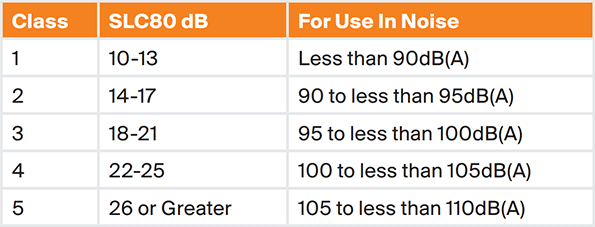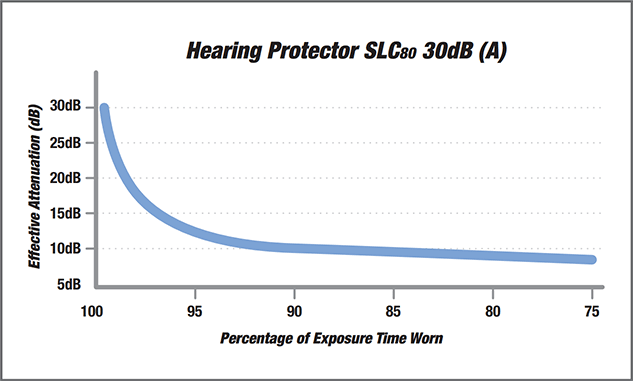How to Protect Your Hearing
Damage Prevention
Since noise induced hearing loss cannot be cured, it must be prevented. There are several noise control techniques including engineering controls and administrative controls. Personal hearing protection should be regarded as first aid until noise levels can be reduced to ‘safe’ levels, or as a last resort when noise cannot be engineered out.
Personal hearing protection is usually available in two forms: earplugs and earmuffs. Earplugs are usually made of silicone, or foam, and are inserted into the ear canal. Earmuffs completely enclose the ear, and are held in place against the side of the head by a headband.
Earplugs and Earmuffs work by blocking the sound waves from reaching the inner ear. The process of blocking the sound waves is called attenuation. The higher the attenuation the more noise is blocked from reaching the inner ear.

The Class System
Under the Australian Standard AS/NZS 1270:2002, the class system is a simple way to select a hearing protector appropriate to a noise exposure. Once the extent of the noise hazard has been determined by a noise level survey, the user simply applies this to a table like the one below to select an appropriate hearing protector.
All calculations are based on the maximum exposure limit of 85dB Leq, 8hr. Example: If a noise level survey shows a person will be exposed to a noise level of 102dB(A)Leq 8hr using the above table, we can see that a Class 4 hearing protector is required for protection against this level of noise.
In Australia the SLC80 rating is still an acceptable method for the selection of hearing protectors according to clause A2.3 in Appendix A of AS/NZS 1269.3:2005.

Workplace Protection
Discomfort or irritation when wearing hearing protection is particularly apparent and can lead to removal of the hearing protector. This is commonly what happens with high attenuating hearing protectors that are often heavier and more uncomfortable. You only have to remove your hearing protection a few minutes every day for the damaging effects of noise to accumulate. This is why 100% wear time is so important.
Over a working day, periods of a few minutes of unprotected exposure can easily accumulate. An example of reduced effective protection is removing your hearing protector for 10 minutes during a total exposure time of 1 hour. The effective protection provided by a high attenuating hearing protector (30dB) is reduced to 8dB. This makes the effective protective value 22dB less than expected, by wearing the hearing protector 83% of the time over 1 hour.
It is vital that every effort is made to encourage 100% wear time. This can be achieved through training and providing suitable hearing protection that is comfortable enough to wear all day.

Material Courtesy of Howard Leight